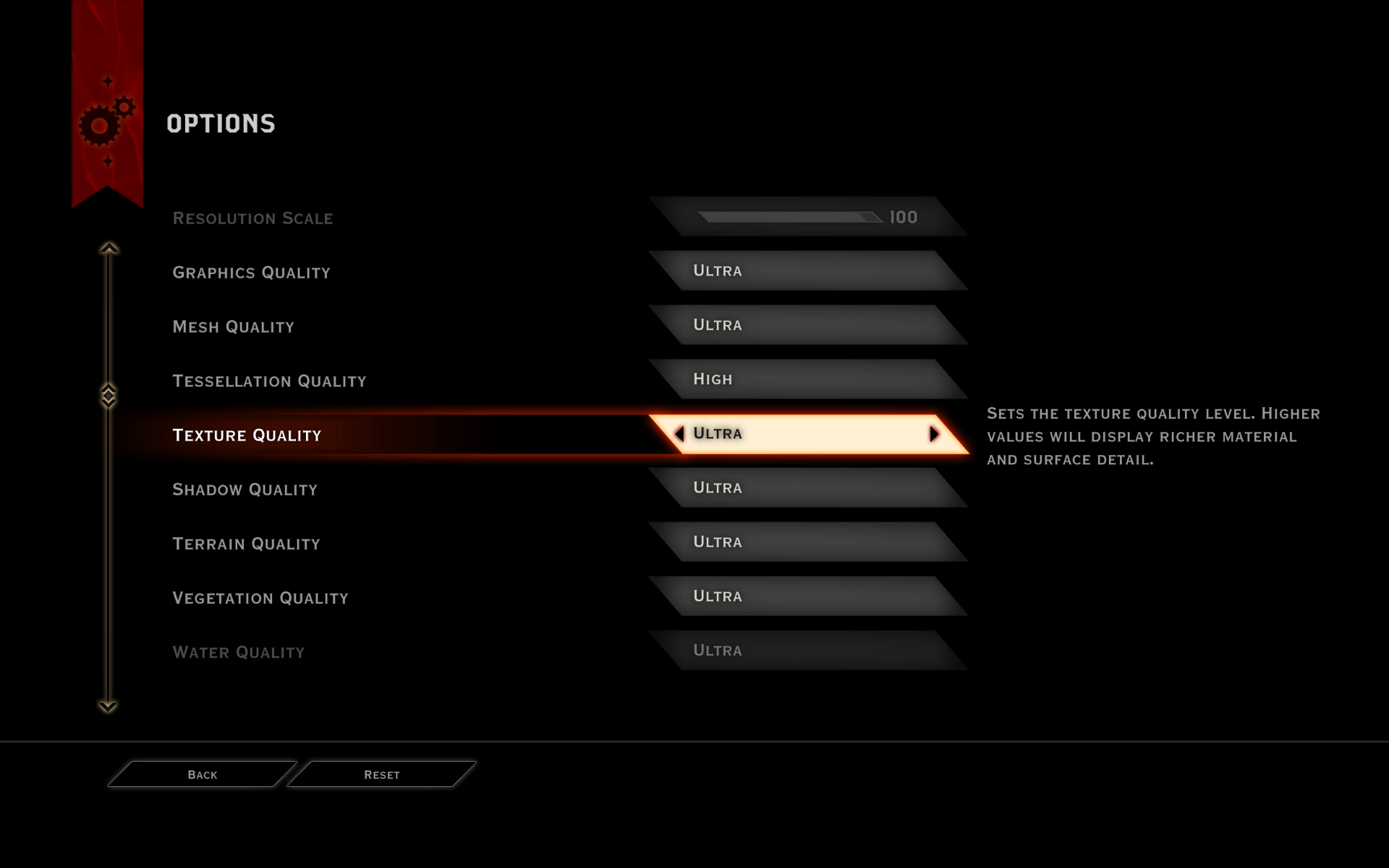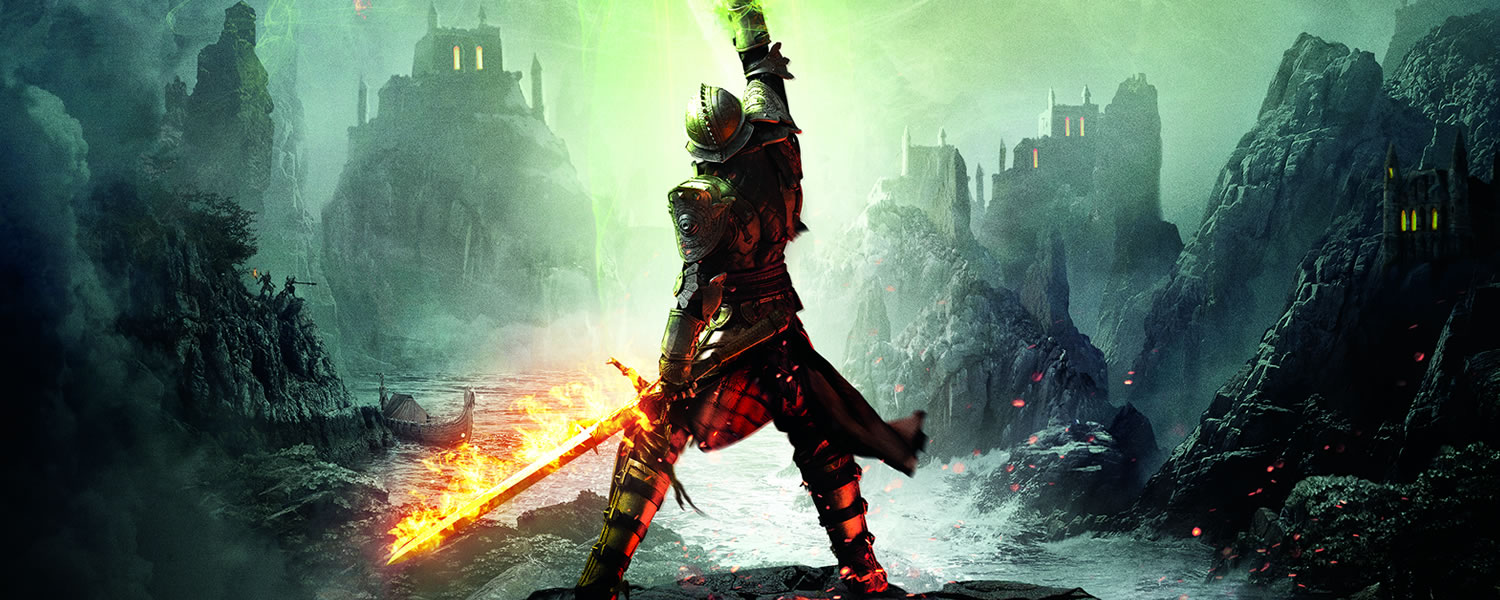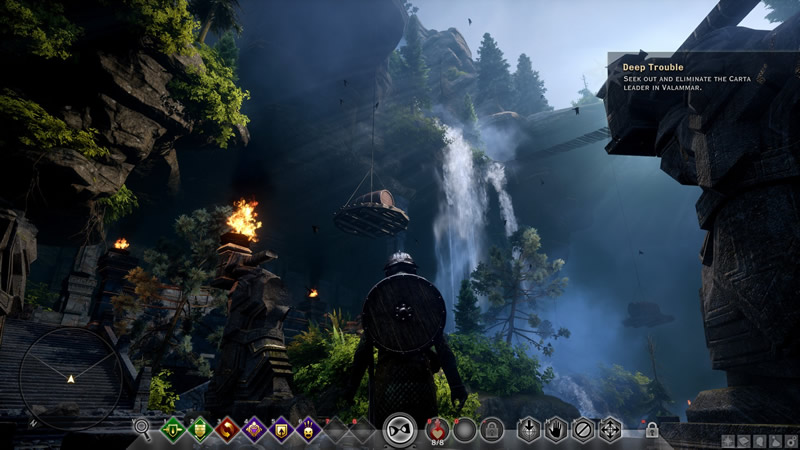As a long time fan of the series, our mobile editor Tim jumped at the opportunity to preview Dragon Age: Inquisition ahead of release last month. As with Kotaku's impression of the final release – read the gameplay review here – Tim concluded that the fantasy RPG's third iteration is a must-play.
Fortunately, that should be doable for most gamers with official recommended requirements including a GTX 660 or HD 7870 / R9 270 graphics card, 8GB of RAM and a Core 2 Quad or Phenom II X6 – hardly a tall order, though we suspect extra firepower wouldn't hurt. The quad core CPU requirement in particular has been controversial.
After all, Dragon Age: Inquisition has been built with Frostbite 3, the same game engine used by Battlefield 4 except BioWare also integrated a vegetation engine called 'Speed Tree' that has been used in many games and movies, from Avatar to Star Trek.
The result is a stunning world that scales surprisingly well on older gear, with the game having been designed for consoles as well as PCs. Folks with high-end rigs can look forward to higher resolutions along with better textures, lighting and characters models.
Overall, PC gamers can expect a crisper, more detailed world, though precisely how crisp and detailed will depend on your setup. Before we jump to the benchmarks let's review our testing method and system specs and discuss some bugs we've encountered.
Testing Methodology
As always, we used the latest AMD and Nvidia drivers for testing, which included 25 DirectX 11 graphics card configurations from both companies covering all prices. Our test rig was outfitted with the Intel Core i7-4770K to remove CPU bottlenecks that could influence high-end GPU scores.
Although we usually rely on Fraps to record up to 90 seconds of gameplay for our benchmark data, BioWare has provided us with an easier method that is also more accurate. Dragon Age: Inquisition's built-in benchmark renders a short scene as fast as possible.
We tested the game at three common desktop display resolutions: 1680x1050, 1920x1200 and 2560x1600 using DX11.
The Ultra quality preset was used which sets rendering features such as mesh, tessellation, texture, shadow, terrain, vegetation, water, post-process and effects to their maximum value. Meanwhile ambient occlusion is set to HBAO (horizon-based ambient occlusion) and multisampling anti-aliasing is set to 2xMSAA.



Test System Specs
- Intel Core i7-4770K (3.50GHz)
- x2 8GB Crucial DDR3-2400 (CAS 11-13-13-28)
- Asrock Z97 Extreme6 (Intel Z97)
- Silverstone Strider Series (700w)
- Samsung SSD 840 Pro 512GB (SATA 6Gb/s)
- Gigabyte Radeon R9 290X (4096MB)
- Gigabyte Radeon R9 290 (4096MB)
- Gigabyte Radeon R9 285 (2048MB)
- Gigabyte Radeon R9 280X (3072MB)
- HIS Radeon R9 270X (2048MB)
- HIS Radeon R9 270 (2048MB)
- HIS Radeon R7 265 (2048MB)
- HIS Radeon R7 250 (1024MB)
- HIS Radeon R7 240 (1024MB)
- HIS Radeon HD 7970 GHz (3072MB)
- HIS Radeon HD 7970 (3072MB)
- HIS Radeon HD 7950 Boost (3072MB)
- HIS Radeon HD 7950 (3072MB)
- HIS Radeon HD 7870 (2048MB)
- HIS Radeon HD 7850 (2048MB)
- HIS Radeon HD 7750 (1024MB)
- Gigabyte GeForce GTX Titan (6144MB)
- Gigabyte GeForce GTX 980 (4096MB)
- Gigabyte GeForce GTX 970 (4096MB)
- Gigabyte GeForce GTX 780 Ti (3072MB)
- Gigabyte GeForce GTX 780 (3072MB)
- Gigabyte GeForce GTX 770 (2048MB)
- Palit GeForce GTX 760 (2048MB)
- Gigabyte GeForce GTX 750 Ti (2048MB)
- Gainward GeForce GTX 680 (2048MB)
- Gainward GeForce GTX 660 Ti (2048MB)
- Gainward GeForce GTX 660 (2048MB)
- Microsoft Windows 8.1 Pro 64-bit
- Nvidia GeForce 344.75 WHQL
- AMD Catalyst 14.11.2 Beta


